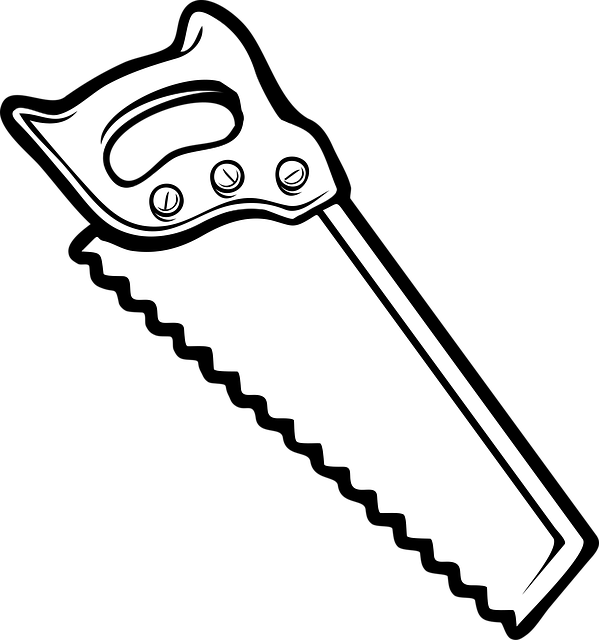SEO internal links plugins streamline website navigation and search engine visibility by suggesting strategic link placements based on content and keyword analysis. They automate tasks, enhance user experience, and signal to search engines the importance of specific pages through contextual linking. Measuring user interaction data helps optimize internal linking structures, while advanced users can implement sophisticated techniques for natural reading experiences and improved website architecture.
“Unleash the power of internal linking with our comprehensive guide, tailored for SEO beginners. Discover how a simple ‘SEO internal links plugin’ can transform your website’s visibility and user engagement. We demystify the fundamentals, from grasping the concept of internal linking as an SEO foundation to leveraging powerful plugins for seamless implementation. Learn effective strategies, track performance, and unlock advanced tips to optimize your site’s structure and boost search engine rankings.”
- Understanding Internal Linking: The SEO Foundation
- Why Plugins Are Beginners' Best Friends
- Unpacking SEO Internal Links Plugin Features
- Implementing Effective Internal Link Strategies
- Measuring Success: Tracking Link Performance
- Advanced Tips for Optimized Internal Linking
Understanding Internal Linking: The SEO Foundation

Internal linking is a fundamental aspect of Search Engine Optimization (SEO) that connects pages within your website to one another. It’s like creating a roadmap for search engines, helping them understand your site’s structure and content hierarchy. When you implement an effective SEO internal links strategy, you’re essentially guiding search engine crawlers to every corner of your site, ensuring all your valuable content is discovered and indexed.
This process involves using relevant keywords in anchor text to link from one page to another, passing on some of the page’s authority or ‘link juice’ as it’s commonly called. A well-planned SEO internal links tutorial can significantly improve a website’s visibility on search engines like Google. Plugins like Yoast SEO or Ahrefs SEO make this process seamless, allowing you to seamlessly integrate internal linking into your content strategy and boost your site’s overall SEO performance.
Why Plugins Are Beginners' Best Friends

For beginners navigating the world of SEO internal links, plugins are a true game-changer. These powerful tools streamline the process of creating and managing internal links, which is an essential aspect of optimizing your website for search engines. By integrating an SEO internal links plugin, you gain access to user-friendly interfaces and pre-made templates, making complex link structures simpler to construct and understand. This simplicity is particularly beneficial for those new to the field, as it allows them to focus on content creation and strategic linking without getting bogged down by technical challenges.
Moreover, SEO internal links plugins offer valuable insights into your website’s performance. They provide analytics and reports that highlight where your internal links are taking users, how they’re interacting with different pages, and the overall impact on your site’s SEO. Following these tips and learning from a tutorial can significantly enhance your approach to internal linking. With the right plugin, beginners can quickly grasp the fundamentals of SEO internal links and lay a solid foundation for future optimization efforts.
Unpacking SEO Internal Links Plugin Features

For beginners delving into the world of SEO internal links optimization, understanding the features of a robust SEO internal links plugin is essential. These plugins are designed to streamline and automate various aspects of internal linking, making it an accessible tool for even novice users. Key features often include intuitive interface options for easily identifying and linking relevant pages within your site’s architecture. By analyzing content and keyword data, these plugins suggest strategic internal link placements, enhancing both user experience and search engine visibility.
A well-chosen SEO internal links plugin can significantly contribute to a comprehensive SEO strategy. It aids in creating a cohesive network of interconnected pages, improving website navigation for users while also signaling to search engines the importance of specific content through contextual linking. This strategic approach to internal linking goes beyond simply connecting pages; it involves optimizing your site’s information hierarchy and enhancing overall SEO performance.
Implementing Effective Internal Link Strategies

Implementing effective internal linking strategies is a crucial aspect of optimizing your website for search engines and enhancing user experience. Start by understanding your audience’s navigation paths and creating relevant, contextual links that guide them through your content. A simple rule of thumb is to link to related or supporting pages within your site whenever you mention a topic in depth. This not only improves SEO internal links but also keeps visitors engaged.
Utilize an SEO internal links plugin to streamline the process. These tools help identify opportunities for internal linking, suggesting relevant pages based on your content’s structure and keywords. By integrating such plugins into your website management system, you can quickly add or update links without manual effort. Remember, a well-crafted SEO internal links strategy ensures that your website’s architecture is logical, user-friendly, and search engine-friendly.
Measuring Success: Tracking Link Performance

Measuring success is a crucial step in any SEO internal links strategy. By utilizing an SEO internal links plugin, you gain valuable insights into how your website’s users interact with linked content. This tracking allows you to evaluate the performance of each internal link, identifying which pages are driving traffic and engaging visitors. Through analysis of click-through rates (CTR), time spent on page, and bounce rates, you can optimize your SEO internal links strategy, ensuring that every link contributes positively to your website’s overall search engine rankings.
Remember, effective SEO internal links optimization involves a data-driven approach. By regularly monitoring and adjusting your internal linking structure based on performance metrics, you enhance the user experience while boosting keyword rankings. These tips encourage a dynamic and adaptive SEO internal links strategy, ensuring your website remains competitive in the digital landscape.
Advanced Tips for Optimized Internal Linking

For beginners, an effective SEO internal linking strategy is a powerful tool to enhance website visibility and user engagement. But as you advance, it’s time to explore more sophisticated techniques to optimize your internal links. One valuable asset in this process is an SEO internal links plugin, which can streamline and automate many tasks. These plugins often offer features like smart link suggestions, allowing you to seamlessly integrate relevant content throughout your site.
When implementing advanced tips for optimized internal linking, focus on creating a natural reading experience for users while ensuring search engines understand the context. Use anchor text that is descriptive and accurately represents the linked page’s content. Diversify your internal link structure by linking to varied content types—from blog posts to product pages—to provide a rich user journey. This strategy not only improves SEO internal links tips but also enhances the overall website architecture, making it more intuitive for both users and search engines.
